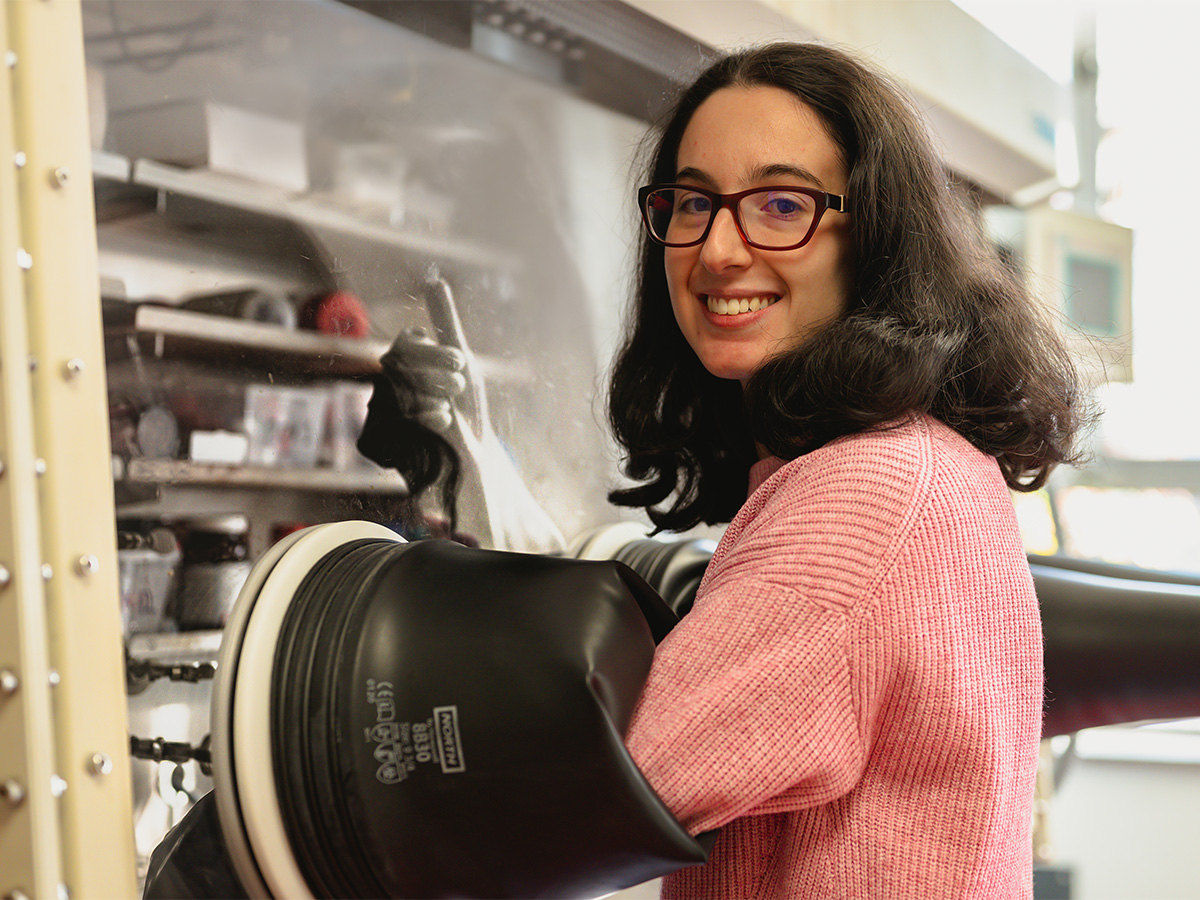Research reveals a new polymerization process for a more stable polymer

From DNA to silicone heart valves to polyester leisure suits, natural and synthetic polymers can be found in countless materials in and surrounding our lives. Natural polymers exist in the cellulose in plants, in potato and corn starches, and in hair and silk. Synthetic polymers are even more pervasive and varied: clothing, celluloid film, PVC pipes, plastic bottles, car tires, paints, glues, toys, fiberglass, and much more—including Canadian bank notes.
Made up of chains of small molecules called monomers, polymers play a significant role in manufactured products because of their strength, flexibility and heat resistance—depending on the makeup of a polymer chain. The process of creating polymers from monomers, called polymerization, is of great interest to molecular scientists like PhD student Rachele Carafa, who recently published (external link) in a special issue of the journal Polymer while working under the supervision of Drs. Daniel Foucher and Andrew McWilliams of the Department of Chemistry and Biology at Toronto Metropolitan University.
With research conducted while in the Molecular Science master’s program, Carafa focused on the polymerization behaviour of inorganic compounds called thionylphosphazenes, which are derivatives of phosphazenes, with the addition of Lewis acid catalysts. The team first studied the initiation step, which is when the polymer chain is first formed through the breaking of the sulfur-chlorine bond, by using computer simulation on various novel and theoretical thionylphosphazene compounds to predict if they can polymerize after substitution of the chlorine atoms on phosphorus has occurred. They then studied the propagation step, which is when multiple monomer units are joined together to form the polymer in a ring-opening mechanism, by observing the effects of temperature and concentration on the polymerization.
“Our results showed that the addition of Lewis acid catalysts decreased the amount of energy required to polymerize these substituted thionylphosphazenes, compared to working without adding them,” says Carafa. “This hadn’t been shown before and, in addition, makes the polymers more stable in the presence of air and moisture. One application where this is potentially useful is the manufacture of oxygen sensors for aircraft wings. Essentially, this discovery has the potential to improve the end use of polymers with more widespread applications.”

Rachele Carafa uses a glovebox to keep her workspace free of water and oxygen. Researchers place their hands in the gloves to add reagents or perform reactions inside the box that require an inert atmosphere.
Carafa emphasizes that different polymers are best suited for different applications, and there is great demand for polymers that offer certain performances—perhaps softer, or more rigid, or more heat resistant, and so on.
“We like stable polymers that perform in predictable ways,” says Carafa. “The space shuttle Challenger explosion is an example of a disaster caused by the use of a polymer that performed well under certain conditions but failed on launch day when record-low temperatures impacted the rubber O-ring seals. Our research contributes to the knowledge in this very extensive field by illustrating one way to improve certain properties of a polymer—in this case, when interacting with air and moisture—which opens doors to new applications. One of those potential applications could be antimicrobial agents, which is an area for future study.”
Building on this research, Carafa says a next step could be to make the polymerization process of these compounds more efficient by utilizing microwave irradiation to decrease the overall reaction time. Preliminary studies show that this is possible, but further work needs to be done to optimize the reaction conditions. This would also potentially allow the substituted thionylphosphazenes to be polymerized more easily than through traditional routes, although they would likely require more energy than their unsubstituted counterparts.
Carafa is also interested in developing “green” polymers derived from plants rather than fossil fuels, which require unique polymerization processes to ensure they are stable and reliable for use before breaking down.
Funding for this research was provided by an NSERC Discovery Grant and from the Faculty of Science.